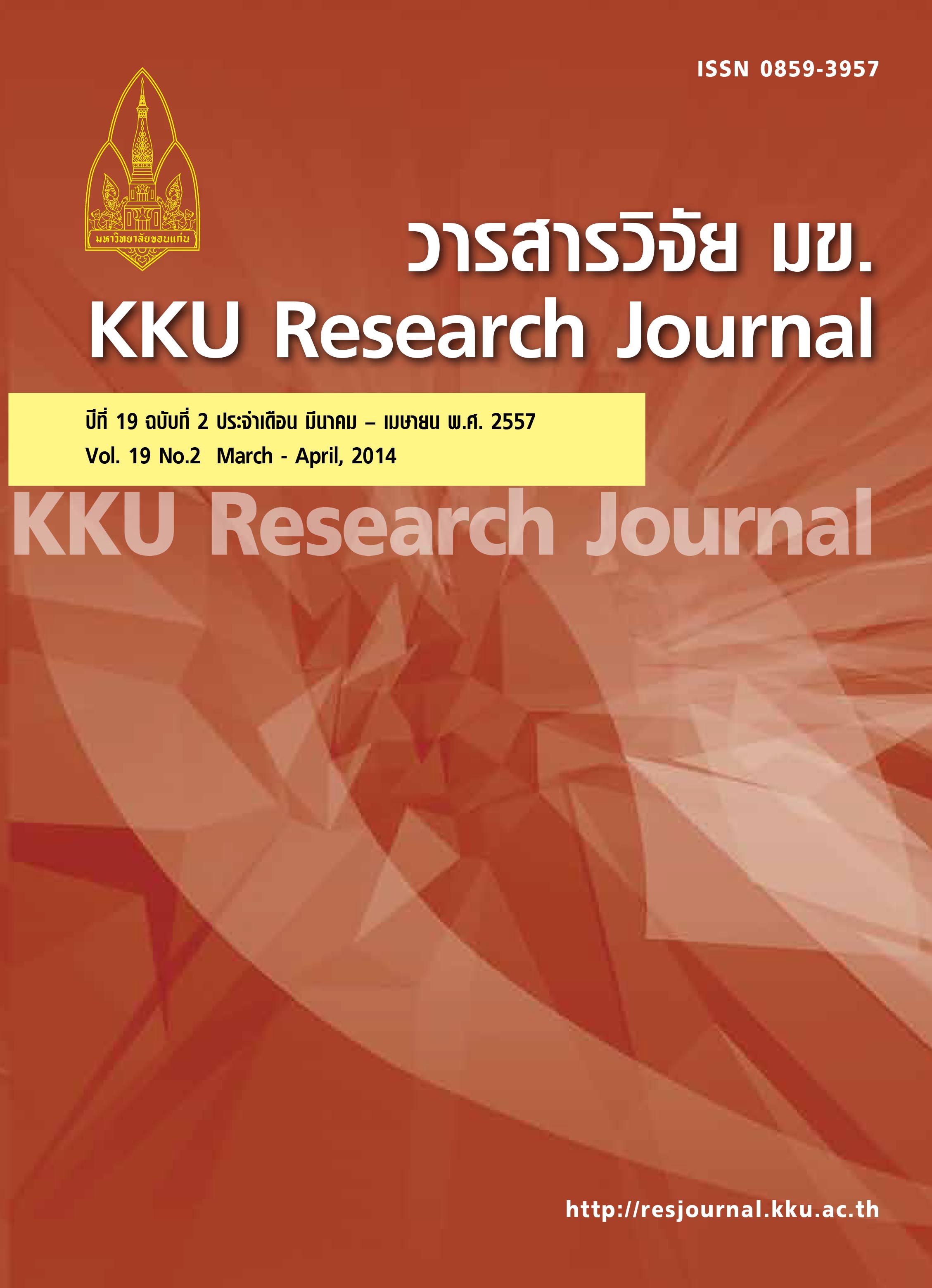Drying characteristics of longan flesh by infrared radiation
Main Article Content
Abstract
This study was conducted to determine drying characteristics of longan flesh by infrared radiation (IR) using twin IR heaters having a radiated length of 300 mm and 17 mm in diameter with 500 Watt for each heater. These twin IR heaters were placed in a parabolic sheath. Using two parabolic sheaths, IR radiated in a range of 3–8 micrometer falling in the far infrared radiation (FIR). The distance from IR heater to a longan surface was fixed at 25 mm. In the present study, the effects of IR intensities, 0.521, 0.625 and 0.729 W.cm-2and air velocities blew over the sample surface of material being dried, 0.4, 0.7 and 1.0 m.s-1on moisture loss and dried longan flesh qualities were investigated.
A-grade longans cv. E-dor(approximately 27–28 mm diameter) were used in this study. The longan flesh with the initial moisture content of 80 % w.b to be dried to final moisture content of 18% w.b. according to Thai Community Product Standard number 136/2546. Drying rates were used to determine an appropriate empirical longan flesh drying model. It was found that the use of infrared intensities of 0.521-0.625 W.cm-2led to shorten the drying time and consequently lower the specific energy consumption while the use of air velocities of 0.7-1.0 m.s-1inversely affected. The dried longan flesh gave the higher values of lightness and total color difference when using the infrared intensity of 0.625 W.cm-2, the lightness was directly affected by the air velocities. The hue angle identified the yellowish brown of dried longan flesh. From the findings, we could draw the drying conditions of flesh longan with infrared radiation as infrared intensity of 0.625 W.cm-2 and air velocity of 0.7 m.s-1. The Page Model described the moisture loss withinacceptable ranges.
A-grade longans cv. E-dor(approximately 27–28 mm diameter) were used in this study. The longan flesh with the initial moisture content of 80 % w.b to be dried to final moisture content of 18% w.b. according to Thai Community Product Standard number 136/2546. Drying rates were used to determine an appropriate empirical longan flesh drying model. It was found that the use of infrared intensities of 0.521-0.625 W.cm-2led to shorten the drying time and consequently lower the specific energy consumption while the use of air velocities of 0.7-1.0 m.s-1inversely affected. The dried longan flesh gave the higher values of lightness and total color difference when using the infrared intensity of 0.625 W.cm-2, the lightness was directly affected by the air velocities. The hue angle identified the yellowish brown of dried longan flesh. From the findings, we could draw the drying conditions of flesh longan with infrared radiation as infrared intensity of 0.625 W.cm-2 and air velocity of 0.7 m.s-1. The Page Model described the moisture loss withinacceptable ranges.
Article Details
How to Cite
Surbkar, S., Wongsiriamnuay, T., Ratanamarno, S., & Surbkar, R. (2017). Drying characteristics of longan flesh by infrared radiation. Asia-Pacific Journal of Science and Technology, 19(2), 201–214. retrieved from https://so01.tci-thaijo.org/index.php/APST/article/view/82930
Section
Research Articles

